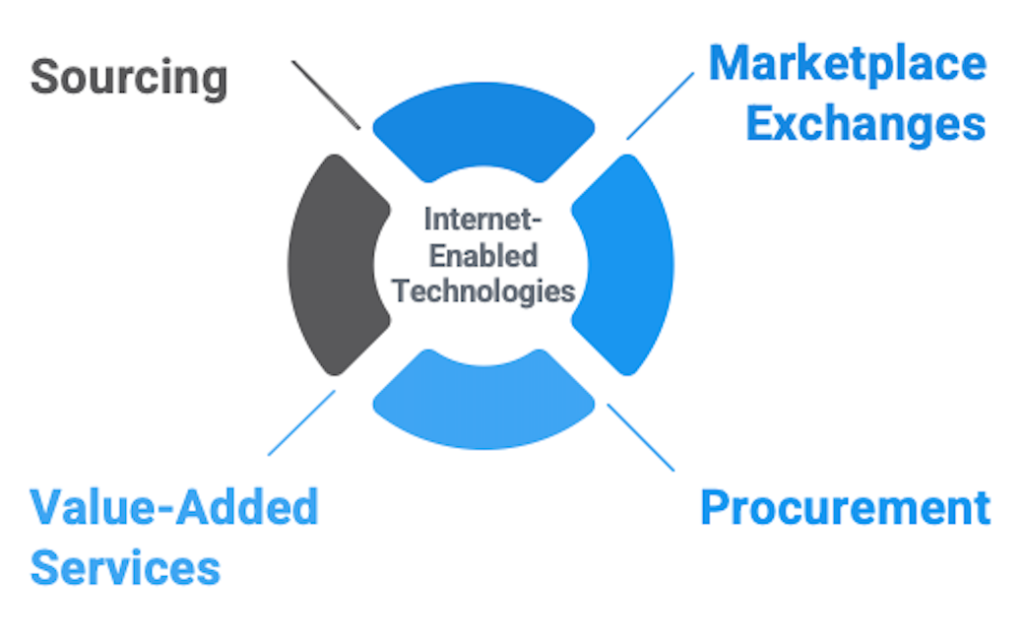Today’s purchasing function has access to a variety of internet-enabled features. These functions can be categorized into four critical types, which are described below.
e-Sourcing
This tool is made up of web-based features that help buyers locate suppliers. It has three key functions:
1. Supplier search: This tool is designed to help buyers find suppliers, communicate requests for quotations (RFQs), negotiate pricing, discuss product quality and volume, and establish contract agreements and partnerships.
2. Product search: This tool is designed to help buyers find specific goods and services.
3. Pre-purchasing services: This feature supports two types of internet-based applications.
e-Procurement
The Internet has revolutionized the traditional way of generating and communicating purchase orders to suppliers. e-Procurement tools automate purchase order activities such as generation, order management, communication, document transfer, and procurement statistics. These tools include catalog management, requisitioning, bid management, shopping robots, auctioning, PO generation, and logistics, all aimed at streamlining and automating purchasing tasks.
Marketplace Exchanges
Exchanges refer to the structure, players, and activities found in today’s business-to-business (B2B) marketplace.
There are three B2B marketplace models:
1. Buyer-driven e-marketplaces used to optimize internal requisitioning and procurement activities
2. Vertical e-marketplaces used as hubs or clearinghouses, servicing the search and procurement needs of a single industry
3. Horizontal e-marketplaces that use technologies ranging from simple portals to sophisticated collaboration hubs to enable multi-buyer/multi-supplier interaction and collaboration
Value-added Services
This feature utilizes the internet to offer various value-added purchasing services, such as financing, accounts payable billing, comparison shopping, collaborative design and configuration management, promotions and pricing, transportation and logistics, synchronization of supply chain procurement planning, and creation of marketplace performance benchmarks.

